Praise for Peaches – How to Make Swizzle
By Dennis Klocek 8 min read
The peach tree contains a complex sugar (gum) that research has shown can help control blood sugar in human digestion. In the old days when people had to work in the fields in the summer they avoided drinking sugary fruit juices to rehydrate. They made a tonic drink called swizzle that was a fruit vinegar and a bit of honey in water that was thirst quenching, and good for the digestion. A great version of swizzle can be made from any fruit vinegar, immune protective herbs and peach gum.
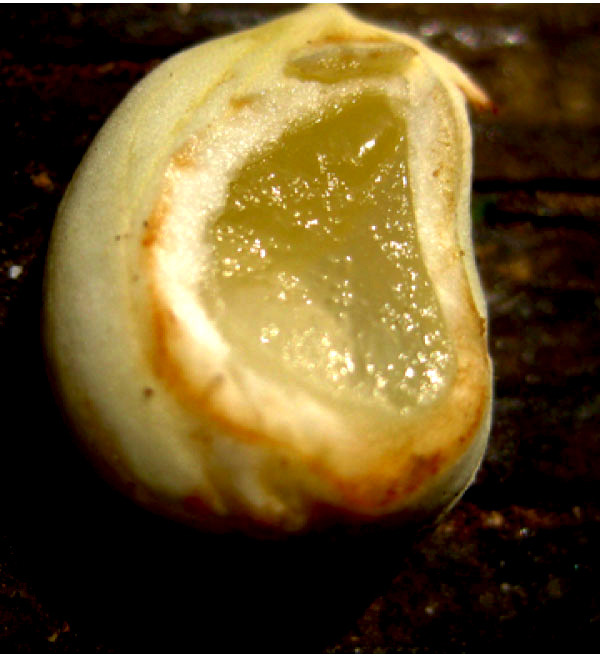
The image shows a young peach fruit with the pit just forming. The jelly in the center is nutrition that is provided for the embryo by the tree. The jelly will slowly harden to form the cotyledons or seed leaves that the embryo will use for nutrition after it germinates. Hormones in the jelly allow the germinating seed to later dissolve the hardened cotyledons for rapid growth after germination.
Cytokinin is a plant hormone that does this by regulating the rate of sugar uptake in the cells of a plant. This prevents oxidative damage during times of stress such as bringing an embryonic seed to maturity in a fruit. The embryo in the seed later requires a regulated source of sugars in order to unfold ordered growth in the first phases after germination .
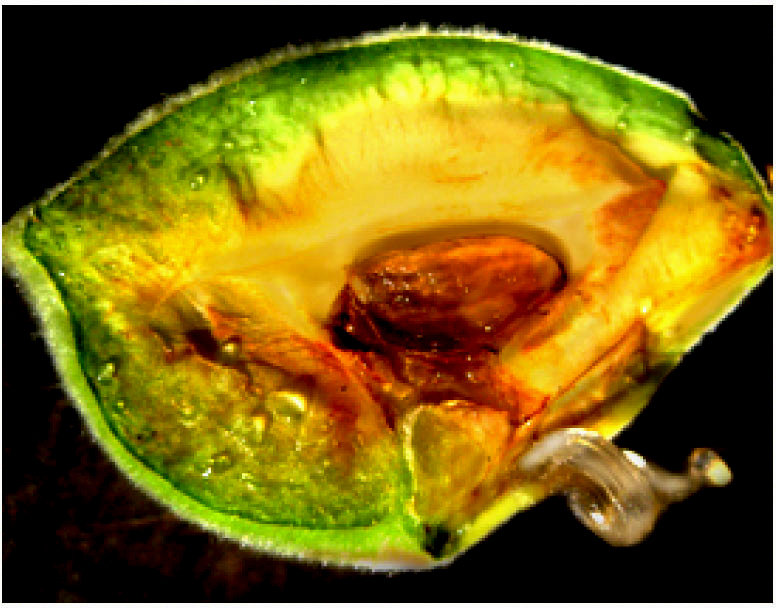
In this image a young peach pit is shown that was developing on the tree as a late rain occurred. In the lower right corner a worm of jelly can be seen extruding from a pore in the flesh of the immature fruit. This jelly is the same substance as the jelly in the pit. It is also the same substance that a peach tree will exude through the bark when a rain occurs after a dry spell or if it is injured or if there is an infection in the cambium. The jelly forms beads or tears on the bark that harden into little gem like forms. The tears are a kind of band aid for the tree. They are rich in complex sugars known as pectins.
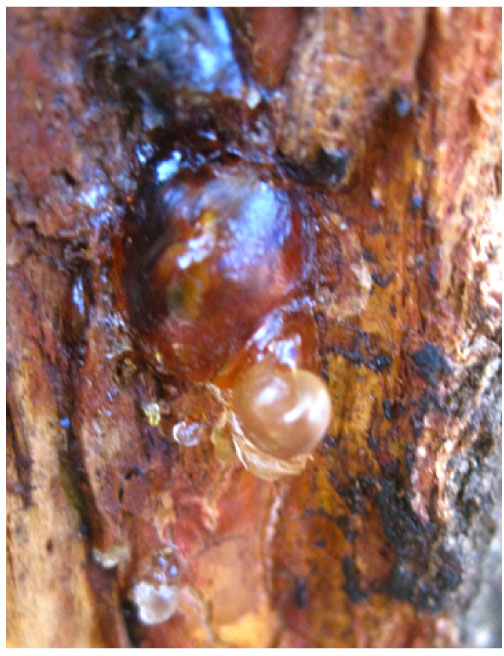
In the growth of a fruit, pectin is developed in the context of the sugar regulating action of cytokinin. In a growing fruit the cell walls are made of cellulose a complex sugar. Pectin forms cellulose and in a fruit that has just been fertilized pectin is used to create many potential cell wall formations that later will be filled with cell contents.
The later development of a fruit shifts from building cell walls to dissolving cell walls. In a ripening fruit, vitamin C works to dissolve the complex pectin sugars and change them into simple sugars. This is the ripening of the fruit that changes the flesh from sour to sweet. Pectin, cytokinin and vitamin C regulate this sugar metabolism. Research has shown that this relationship in plants can be beneficial to sugar regulation in the plant life of the human biome as an aid to sugar metabolism.
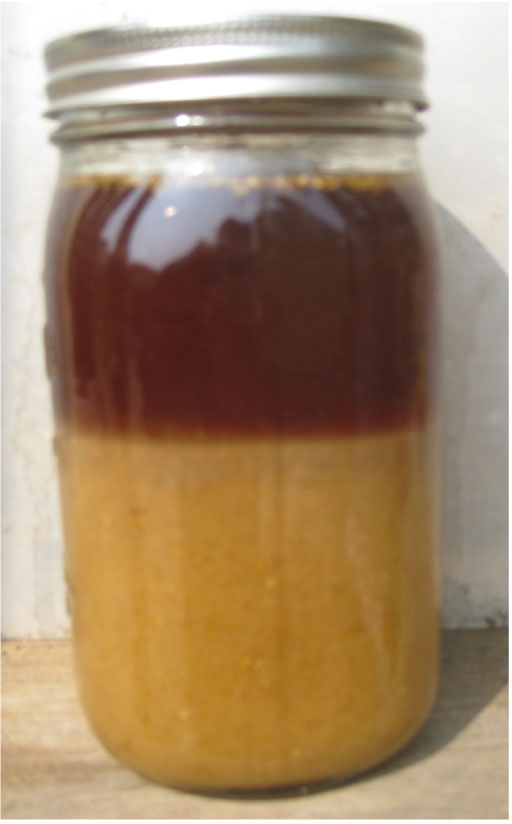
Using this natural process as a model, a tonic form of herb vinegar can be made as an immune strengthening tonic. To make the tonic two extractive processes using fruit vinegar are useful. Begin by putting a cup of finely chopped ginger with a two inch turmeric rhizome into a cup of fruit (apple cider) vinegar and two tablespoons of ground black pepper in a blender. Put the maceration into a quart jar in a water bath at medium heat. Ginger, turmeric and black pepper are a version of an Ayurvedic tonic known at trikatu, used for its ability to interact with cellular membranes. Trikatu means three pungents.
5 INSERT PEACH GUM TEARS
At the same time, in a pint jar, take a half cup of vinegar, one teaspoon vitamin C powder and a tablespoon of peach gum tears. Vinegar and vitamin C will completely dissolve peach gum tears. Put that jar in the water bath with the other jar. When the gum tears begin to dissolve, it might be necessary to add just a bit of water to help the jelly on the bottom to completely turn into a syrupy liquid gel.
After a week strain and combine both the trikatu liquid and the gum liquid. One tablespoon of this in an ounce of water creates a lemony vinegar swizzle, that can be taken after meals to help regulate blood sugar. But this work can be taken much further. The swizzle makes an excellent extractive vinegar base for herbs that support digestive membranes, sugar assimilation, and also provide immune protective forces.
Members of the parsley family such as parsley, angelica, anise and fennel when steeped in this solution provide blood vessel strengthening properties. Members of the mint family such as rosemary, peppermint, marjoram and wood betony provide digestive tone to the intestines. These herbs are readily available and when steeped in the swizzle create a tonic that is supportive of immune system function by toning (tonic) digestive tissues.
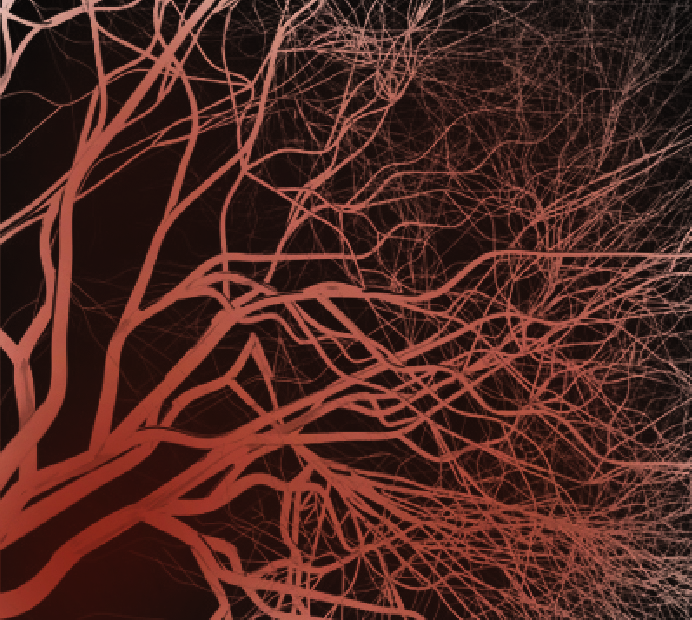
Research has linked immune system dysfunction to the condition of the blood vessels. When blood vessel tone is weak, pores open that make the vessels leak. Pathogens use these breaches to more easily invade the body. What counteracts this is a blood vessel tonic that strengthens the vascular and digestive tissues as well against losing tone.
A difficulty in this is that herbal tonics are generally water soluble substances. To get them into the blood the tonic must stay intact going through the mucous membranes that line the gut. Here is where the vinegar, gum, herb combination in the form of liposomes is useful in reaching the blood vessels in the gut for optimal absorption. From there the lymph and the blood will carry the tonic forces through the body.
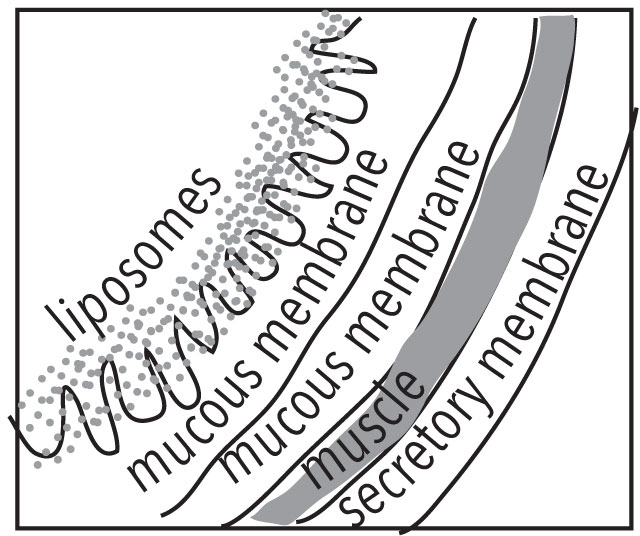
Herb vinegars can be made much more effective for this with the help of an ultrasound bath to encapsulate solutions. Pectin liposomes allow medicinal solutions to interact with the mucous membranes that line the digestive system. In the pharmaceutical industry gums from orange skins are used to keep the medicinal properties from being neutralized until they are inside a mucous membrane. From there they get easier access to the cell membrane. Peach gum excels in doing this and is also very fragrant and digestible.
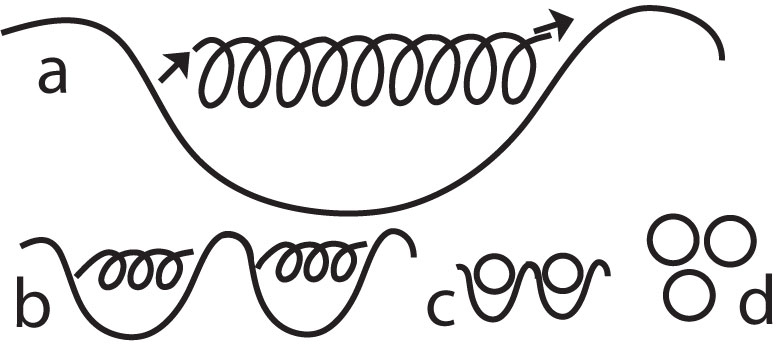
The diagram shows the action of an ultrasound sound wave passing through a solution. The solution between the peaks of the sound wave is streamed into a linear vortex (a). Pectin gums form polymer sheets in the perimeter of the vortex as solutions with less gum are forced into the center. If the sound is shut off the linear vortex forms tend to establish themselves, shrink and then break up into smaller units. That is seen in image b.
When the sound is turned on again the smaller vortices become entrained into sound waves and elongate again but at a smaller scale (c). The sound can be phased off and on until micro spheres of gum coated solution are formed in the sound waves (d). These gum spheres with water soluble centers are liposomes.
In this model the soluble centers are the vinegar herb extracts. Peach gum forms an ideal liposomal coating that shields the contents during digestion. Lipids that are needed to complete the liposome come from the terpenoids in the herbs.
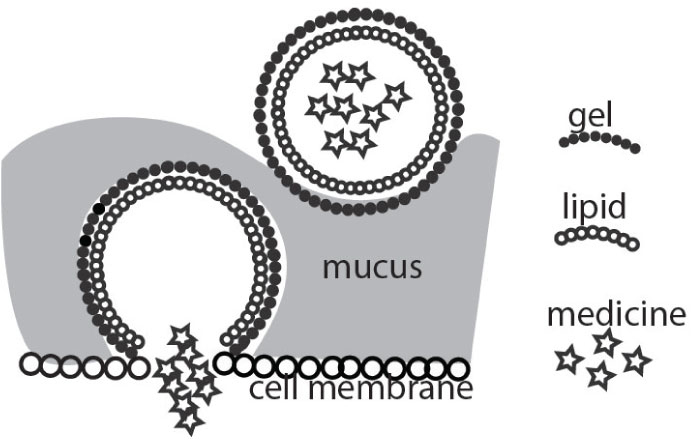
This image illustrates a gum encapsulated liposome interacting with a mucous membrane in an intestine. The outer gum layer relates to the chemistry of the mucous. The peach gum is surrounding a lipid or water avoiding layer. The essential oils extracted by the vinegar form the lipid layer. Inside the water avoiding layer is a water soluble layer. Water soluble phenols from the herbs are in the center.
As the gum liposome interacts with the intestinal mucous membrane the gum allows the liposome to remain safely embedded until it eventually reaches a cell membrane and dissolves. The lipid shell of essential oils then interacts with the phospholipids that compose the cell membrane. This makes the membranes more accepting of the water soluble medicine encapsulated in the liposome. The medicinal contents of water soluble phenolics can then enter the cytoplasm of the cell along with the herbal essential oils.
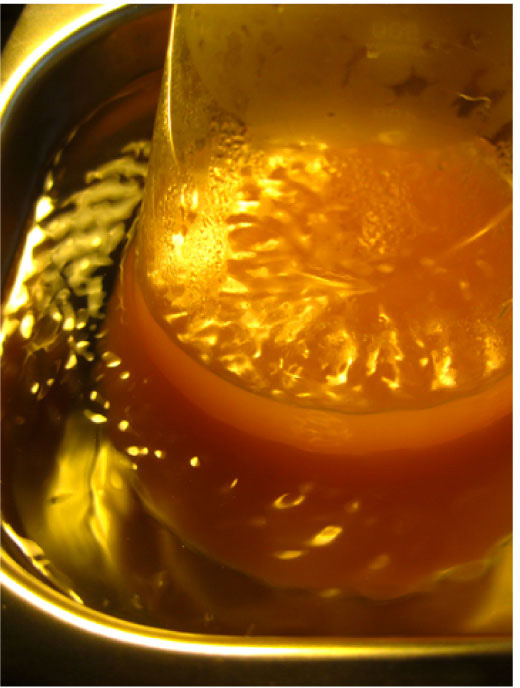
To create the gum layer an ultrasound device can render the gum in the peach pectin into liposomes of a vinegar herb/ peach gum/mead solution. All that is needed is to put that solution into a flask in the bath. The dissolved peach gum is gelatinous even when liquefied. A good balance of liquid contents for the ultrasound process is to mix two parts herb vinegar, one third of one part gum solution and one third of one part mead or brandy (can be infused with herbs) together in the flask. In these proportions peach gum, herb vinegar and brandy are an ideal vehicle for creating liposomes.
Set the ultrasound device to go through three cycles of about five minutes each with a few minutes rest between each cycle. The alcohol (mead or brandy) is an aid to the liposome formation. The pectin rich peach gum efficiently encapsulates minute particles of the herbal infused vinegar solution. The encapsulation helps gastric membranes in the body to be much more interactive with the herbs in solution.
The liposomal, gum infused herb vinegar and brandy create a highly refined healing tonic. The finished product is stable with a floral vinegar taste. This can be used straight at the rate of three droppers full taken orally after a meal. Regular small doses are better than large infrequent doses. If you are a good shot with a dropper, aim the stream at the back of your tongue, a great immune defense area.

Dennis Klocek
Dennis Klocek, MFA, is co-founder of the Coros Institute, an internationally renowned lecturer, and teacher. He is the author of nine books, including the newly released Colors of the Soul; Esoteric Physiology and also Sacred Agriculture: The Alchemy of Biodynamics. He regularly shares his alchemical, spiritual, and scientific insights at soilsoulandspirit.com.
1 Comments
Leave a Comment
Similar Writings
Scientific Hypotheses – Truth or Error?
[Republished from Journal of Anthroposophical Medicine (JAM) Vol.10 1993] If one were to approach a professional scientist and challenge the hypothetical method as a flawed premise for good science, one would surely be met with vigorous protest. And, indeed, the protest would be well founded, because the hypothetical method is a well-proven cornerstone of scientific…
Video Series: The Alchemical Basis for Holistic Health Science
In this series by Dennis Klocek, he outlines a different way to look at health science through the temperaments. Part 1: Phase Theory and Element Theory In the first video, he compares the similarities between the contemporary phase theory of matter (solid, liquid, gas, warmth) and and the older element theory (earth, water, air, fire).…
Hi Dennis
I recently partook in your exciting Webinar: Traditional Medicine, dialogue between substance and symbol.
I would like to try making your Digestive Tonic and have 2 Questions I hope you could answer.
1. How long do you keep the 2 jars, Trikatu and Peach Gum liquid in the water bath at medium heat before next step; after a week strain and combine?
2. What might substitute treating the substance with US…rhythmical shaking perhaps?
Warmest Thank You
Marei